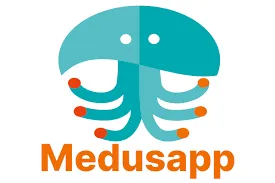Already in April, jellyfish occupied the Costa Brava, and later appeared in A Coruna. In both cases, we are talking about the Pelagia Noctiluca jellyfish, one of the most common in the Mediterranean Sea. And one of the most unpleasant, she is even sometimes called a "cannibal" for her rather painful burns. Experts associate the earlier appearance of jellyfish with abnormal warming and drought.
There are more jellyfish on Spanish beaches this year
Jellyfish are one of the typical representatives found on beaches. Their bites can lead to pain, itching, redness and inflammation. In Spain, the number of beaches marked with a yellow flag is increasing due to the high concentration of jellyfish.
Medusa.net He is responsible for conducting research, thanks to which everyone can find out which beaches have jellyfish. The MedusasApp mobile app provides detailed information about such beaches so that locals and tourists can safely relax on the coast.
According to the data Medusa.net The region with the largest number of beaches with jellyfish is Andalusia.
And here are those beaches:
Playa de la Bajadilla (Almeria) Playa Guainos Bajos (Almeria) Playa de Getares (Algeciras) Playas de la Rada (Estepona) Playa de Calahonda (Granada)
The Valencian Community is also famous for its large number of beaches, where jellyfish are increasingly found:
Playa de Muchavista (Alicante) Playa de Venecia (Gandia)
Beaches of Catalonia and the Balearic Islands, where jellyfish are also found:
Playa de las Casetas (Barcelona) Playa de Castellfedels (Barcelona) Cala Fuster (Mallorca)
Medusapp: An app that shows if there are jellyfish on the beaches
This year, the possibility of encountering jellyfish on Spanish beaches has increased especially strongly. The bites of some of the jellyfish that can be found on the Mediterranean coast can cause burning of the skin and blisters for several days or even weeks.

To prevent unpleasant encounters with jellyfish, former students of the Polytechnic University of Valencia, in collaboration with the University of Alicante and the Jimenez Diaz Foundation Health Research Institute, created the Medusapp application. In it you can see information about the presence, type and number of jellyfish on the beaches. The data is generated based on detailed information from users who upload photos and mark where they encountered jellyfish.
In addition, the application contains tips on first aid in case of a bite, as well as a guide to various types of jellyfish and the intensity of their bites.
